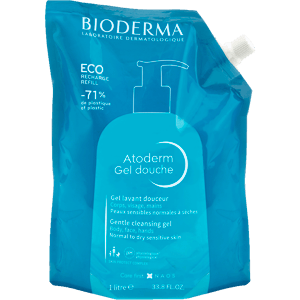Atoderm Gel de Ducha Eco-Refill
BIODERMA

Atoderm Gel de Ducha Eco-Refill
BIODERMA
ATODERM GEL DOUCHE
Limpiadores Cuerpo, Cuerpo y rostro, Manos y uñas
BIODERMA

BIODERMA
ATODERM GEL DOUCHE
Limpiadores Cuerpo, Cuerpo y rostro, Manos y uñas
Cada uno de nuestros ingredientes ha sido específicamente seleccionado por su eficacia. Encuentra todos los ingredientes de tu producto agrupados en familias, según su función.
Los ingredientes de nuestras fórmulas han sido seleccionados según criterios dermatológicos muy estrictos y recomendados por expertos toxicológicos independientes. Descubre la naturaleza, la función y el origen de cada uno de nuestros ingredientes, clasificados en tres categorías principales de ingredientes activos.
Aquí se agrupan los ingredientes que contribuyen a la eficacia esperada del producto: aquellos que optimizan o preservan los mecanismos biológicos de la piel (como hidratación, regeneración, acción reponedora de lípidos), y aquellos que tienen una acción físico-química muy específica (exfoliantes, matificantes, filtros solares ...).
Los ingredientes enumerados aquí son los que contiene la última fórmula de este producto. Como puede haber un desfase temporal entre su producción y su distribución en el mercado, te invitamos a consultar la lista de ingredientes en el envase del producto.

¿Cuál es la función de este producto? ¿Cómo se aplica? ¿Cuándo se usa? ¿En qué formatos está disponible?